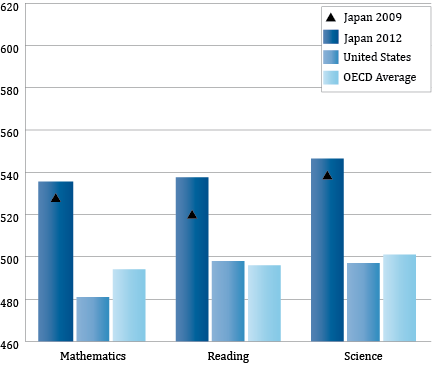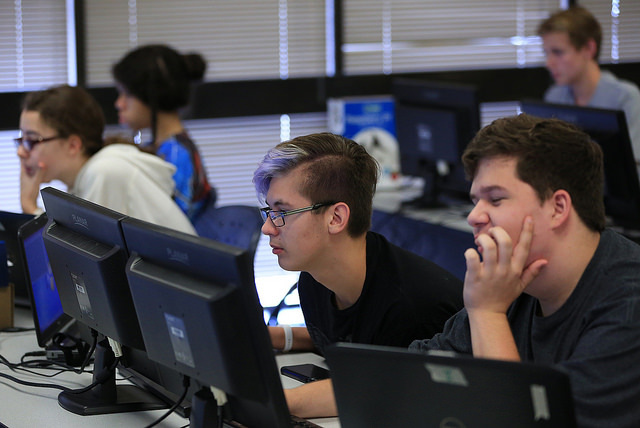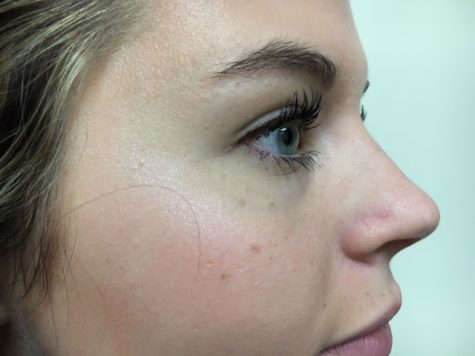A Correct Educational System?
As the alarm blares in the morning and the sun aggressively pries open the eyes of poor restless students, we tend to automatically question the benefits of our schools. A specific high school structure will most likely make complete sense to one of its students, but the same cannot be said of a foreigner. Separate societies develop their education in a way that relates to their culture. In fact, the variety in educational systems worldwide is truly astonishing. Nevertheless, these differences and their overall results drive people to ponder whether or not there’s a correct way to teach, and if there is, why doesn’t everyone follow these rules?
United States:
Beginning with the land of the free, the U.S. high school system is made up of a familiar grade system that goes from grades 9 to 12. The opportunities and extracurricular activities offered in the majority of schools represent the importance, placed by administrators, parents, and even college, on certain traits such as leadership, problem solving, and application in real life situations.
As hard as it is to remain unbiased, the interaction between teachers and students proves positive, as it encourages creativity and the freedom to literally be anything. Although standardized tests have become more popular in the eyes of the school system, that doesn’t erase the fact that it not only offers many opportunities to access education, but a wide range of school activities that help students build skills in whichever route they decide to take.
However, a new study published by the National Superintendents Roundtable and the Horace Mann League states that although the U.S. has the most educated workforce, it also shows high levels of social stress compared to other nations. These results took childhood poverty, income inequality, and violence into consideration.
Stress has proven to negatively influence health behaviors similar to sleep, eating, and exercise, which is arguably beneficial. Teens report sleeping below the hours recommended by the National Sleep Foundation, which sounds like a dream job. Eating and exercise are also affected as stressed students are more inclined to indulge in large quantities of unhealthy food and lack of time to exercise.

France:
The French high school system, referred to as ‘lycee’, advocates academic success to a point where having ‘fun’ is irrelevant. Thus, they’ve been labeled as one of the most ‘thorough’ school systems, referring to their extensive investments in their academic departments.
Starting at age 16, high school students spend a minimum of 24 to 28 hours a week in school. Their high school career is divided into three years: Seconde, Premiere, and Terminale. These years primarily exist to prepare students for the baccalaureat (bac), a test needed to pass in order to go to a university.
During Seconde, students take classes based on their previous test results and personal choice. They are split into three main categories: Bac Economics, Bac Science and Maths, and Bac Language Arts. Their Premiere year consists of preparing for and taking the language portion of the bac exam. Finally, Terminale is when each student is tested on their specific subjects.
“Vacations in France are definitely longer,” says AVHS senior Emmanuella Vigne as she describes one the perks of going to school in France. Furthermore, they offer a stricter curriculum, which shows its advantages, as there are 3,500 institutions of higher education. On the other hand, the rigidity of the curriculum and lack of parent-teacher involvement has developed a rather systematic environment.
Once labeled as one of the best education systems worldwide, France’s teaching and grading standards are giving rise to a debate about whether it’s too harsh on the students putting them in a system designed for their failure. Authors such as Richard Descoings, head of SciencesPo, and Peter Gumbel, a British journalist, argue that the French educational system generates anxious youth and damages their morale and self-confidence. These critics define the main problem as the combination of strict grading along with a crammed schedule. They also refer to “le redoublement”: the regular behavior of repeating a school year, as another cause of stress.
Germany:
Its German neighbors, on the contrary, have unbelievably short days that start from 8am until 1pm. Although they project a relaxed vibe, students are actually required to have a rough idea of their future by the time they enter high school, since it branches based on academic and individual abilities. The rules vary in every state; however, in the majority schools include: Hauptschule, Gymnasium, Realschule, Gesamtschule, and a few other options.
Hauptschule focuses on vocational and hands-on training. It goes at a slightly slower academic pace, but often ends in students either enrolling in vocational school and/or an internship that lasts until they are 18.
On the other hand, Gymnasium is academically intensive and results in an Abitur, which is necessary for university admission. It’s for students planning on going to a university or getting a dual degree that includes a vocational degree.
Realschule is more oriented in either part or full-time vocational school; however, students are able to go to Berufsschule for higher education or switch to a Gymnasium.
Gesamtschule accepts students of all academic abilities and awards students who finish ninth grade with a Hauptschule degree and those who finish tenth grade with a Realschule degree.
Other high school options include private schools, international schools, Sonderschule/Förderschule (for children with special education, mental, and physical needs), boarding schools, and church-run schools.
Germany was ranked 12th in mathematics, 9th in science, and 20th in reading out of 65 countries as stated in the OECD/PISA survey (2012) in regards to 15 year olds.
Unlike the U.S., school starts at approximately mid-August and ends around July. Students usually have six weeks during their summer holidays, two weeks in autumn (Herbstferien), two or three weeks at Christmas (Weihnachtsferien), a week at Easter (Osterferien) and various state and religious holidays.
In addition, Germany not only offers multiple educational paths for separate people, but it also provides job training during their high school education so the students could become fairly skilled by the time they graduate.
Criticism pertains to the difficulty of getting accepted into a college. Only a third of German students enroll in college due to its very selective nature. Another source of criticism is caused by the recent influx of immigrants coming from war-torn countries such as Syria. Migrants have a 44% more chance to be sent to vocational schools compared to natives.
However, Germany has proven to improve the mathematics grades of second generation children, while in some states school days have been extended, accompanied with an investment from the government in preschools. Some schools also created a German introductory lesson, which teaches the language, for children who were getting bullied and ostracized.
Japan:
Thousands of miles East, as Japan was forcefully introduced to the West, a competitive desire to succeed in both technology and finance was born. Thus, they recognized their need of an educational system that would prove to be a success.
Therefore, the Japanese educational system is a fusion of English, German, French, and U.S. ideas, dominated with Japanese traditions.
Japanese schools condition the students to have great discipline while demanding a great deal of problem solving abilities. Japan has 96% enrollment in high school nationwide and nearly 100% in the cities.

Their school format is very similar with the U.S. structure, with the exception of having three years in both middle school and high school. Unlike the previous countries, Japan begins its school year in April and ends in December.
Japanese traditions are intertwined within a school day, as the students place their street shoes in compartments and put on school slippers. Responsibility is placed on the students to manage themselves through morning tasks or after school cleaning assignments. Extracurricular activities are also managed mostly by students as teachers supervise.
After a school day most students continue their studies by going to cram schools, specialized schools created to prepare a student for test needed to enter specific high schools and universities, afterwards.
A continuous pressure is placed on students by both their parents and teachers to reach perfection. This stigma of failing has created gruesome realities such as Japan having the ninth highest suicide rate in the world or the fact that there’s been an increase in suicide rates by 30%. Mix that with relentless bullying, which is more common than not, anyone is bound to reach a tipping point.
Whether it was the academic and personal gains or the faults found in all the systems, it’s more than clear that the students and the systems of each country are shaped by the cultures and traditions of its surroundings. This results in uniqueness above all else and provides the rest of the world a chance to see through the perspectives of others when it comes to education.









Andrew Hermansen • Oct 20, 2016 at 12:05 pm
Teaching at an international high school, I frequently have the opportunity to discuss and reflect on this topic. The message that I hear the most from students and staff is that schools in the United States place much more emphasis on collaborative and creative thinking rather than recitating information.
Andrew Hermansen • Oct 20, 2016 at 12:05 pm
*Reciting
Aisha • Oct 19, 2016 at 10:04 am
It was very interesting to learn about the different school systems. Great job!